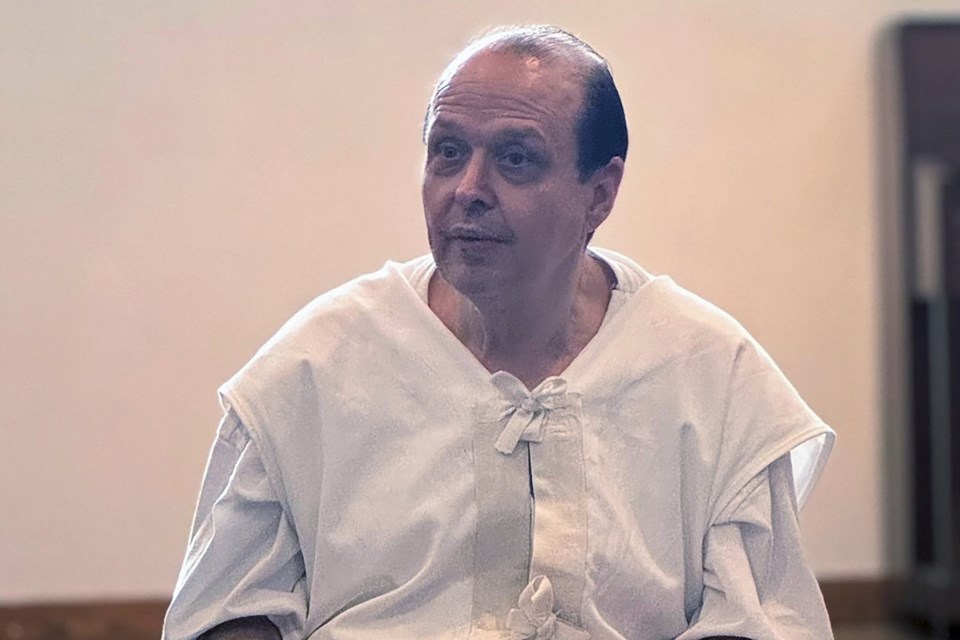HOUSTON (AP) — The Texas Board of Pardons and Paroles on Wednesday denied a request for clemency for a man who this week could be the first person in the U.S. executed for a murder conviction tied to the diagnosis of shaken baby syndrome.
The parole board voted to not recommend that Robert Roberson’s death sentence be commuted to life in prison or that his execution be delayed.
The decision is a major setback for efforts by Roberson's attorneys and a diverse coalition of individuals and groups to stop his lethal injection on Thursday. Roberson, who has long proclaimed his innocence, has few options left.
Gov. Greg Abbott can only grant clemency after receiving a recommendation from the board. Abbott does have the power to grant a one-time 30-day reprieve without a board recommendation. But in his nearly 10 years as governor, Abbott has halted only one imminent execution, in 2018 when he spared the life of Thomas Whitaker.
Earlier Wednesday, the Texas Court of Criminal Appeals denied another request from Roberson to stay his execution. Roberson’s attorneys have asked the U.S. Supreme Court to stay his execution.
Roberson, 57, was condemned for the 2002 killing of his 2-year-old daughter, Nikki Curtis, in the East Texas city of Palestine.
“We urge Governor Abbott to grant a reprieve of 30 days to allow litigation to continue and have a court hear the overwhelming new medical and scientific evidence that shows Robert Roberson’s chronically ill, two-year-old daughter, Nikki, died of natural and accidental causes, not abuse," said Gretchen Sween, one of Roberson's attorneys.
A spokesperson for Abbott did not immediately reply to an email seeking comment Wednesday.
One of those who has been pushing to stop Roberson’s execution is Texas GOP megadonor and conservative activist Doug Deason.
“I believe he is innocent,” Deason wrote in a post on X on Tuesday.
Deason told the Houston Chronicle he has been talking directly with Abbott’s general counsel, James Sullivan, and two other Abbott staff members in recent weeks about Roberson’s case.
The parole board’s decision came on the same day as a Texas House committee met in Austin to discuss his case.
Brian Wharton, the lead detective with Palestine police who investigated Curtis’ death, told members of the Texas House Criminal Jurisprudence Committee he feels shame for playing a role in Roberson’s conviction. He called on Abbott to halt Roberson's execution.
“Don’t make my mistake. Listen to Robert. Hear his voice wherever you can find him, on the pages of all those documents you have from his attorney. But listen and you will hear innocence,” Wharton told members of the committee, most of whom are part of a bipartisan group of more than 80 state lawmakers who had asked the parole board and Abbott to stop the execution.
Roberson’s scheduled execution has renewed debate over shaken baby syndrome, which is known in the medical community as abusive head trauma.
His lawyers as well as the Texas lawmakers, medical experts and others say his conviction was based on faulty and now outdated scientific evidence related to shaken baby syndrome. The diagnosis refers to a serious brain injury caused when a child’s head is hurt through shaking or some other violent impact, like being slammed against a wall or thrown on the floor.
Roberson’s supporters don’t deny head and other injuries from child abuse are real. But they say doctors misdiagnosed Curtis’ injuries as being related to shaken baby syndrome and that new evidence has shown the girl died not from abuse but from complications related to severe pneumonia.
Roberson’s attorneys say he was wrongly arrested and later convicted after taking his daughter to a hospital. They say she had fallen out of bed in Roberson’s home after being seriously ill for a week. His lawyers say the short fall from the bed would have explained the only injury, a minor one, that a defense expert later found on the girl’s head.
Roberson’s lawyers have also suggested his autism, which was undiagnosed at the time of his daughter’s death, was used against him as authorities became suspicious of him because of his lack of emotion over what had happened to her. Autism impacts how people communicate and interact with others.
The American Academy of Pediatrics, other medical organizations and prosecutors say the diagnosis is valid and that doctors look at all possible things, including any illnesses, when determining if injuries were attributable to shaken baby syndrome.
The Anderson County District Attorney’s Office, which prosecuted Roberson, has said in court documents that after a 2022 hearing to consider the new evidence in the case, a judge rejected the theories that pneumonia and other diseases caused Curtis’ death.
The parole board has recommended clemency in a death row case only six times since the state resumed executions in 1982. In three of those cases — in 1998, 2007 and 2018 — death row inmates had their sentences commuted to life in prison within days of their scheduled executions. In two of the cases — from 2004 and 2009 — then-Texas Gov. Rick Perry rejected the parole board’s recommendation to commute a death sentence to life in prison and the two prisoners were executed.
In 2019, the parole board recommended a 120-day reprieve for Rodney Reed, just days before his scheduled execution. But the Texas Court of Criminal Appeals stayed Reed’s execution before Abbott could take any action on the board’s recommendation.
___
Follow Juan A. Lozano: https://twitter.com/juanlozano70
Juan A. Lozano, The Associated Press




